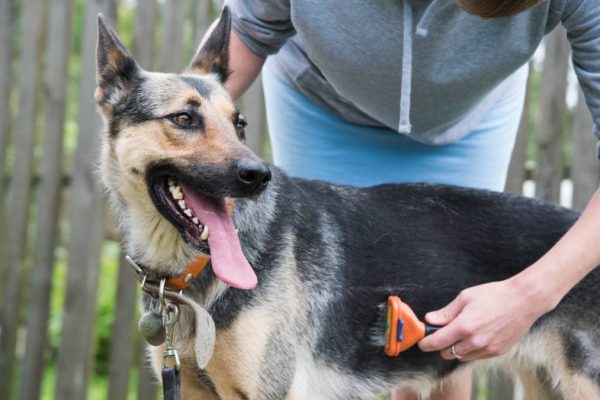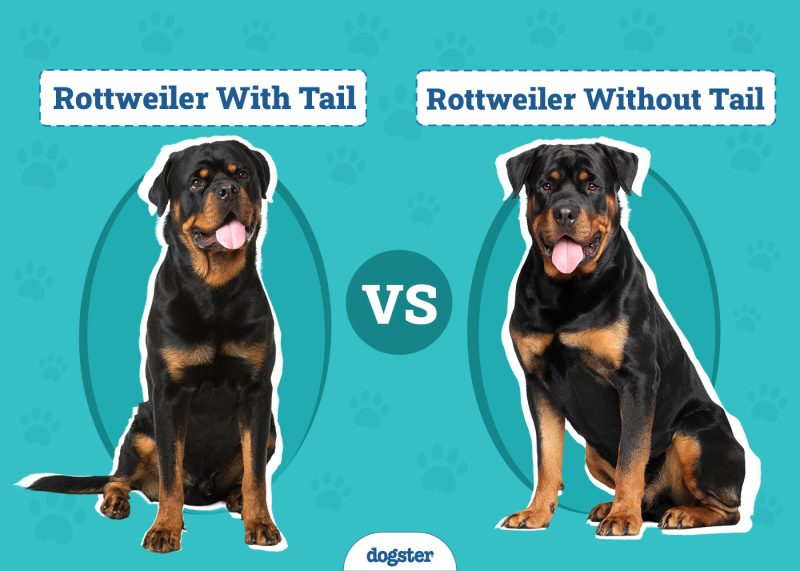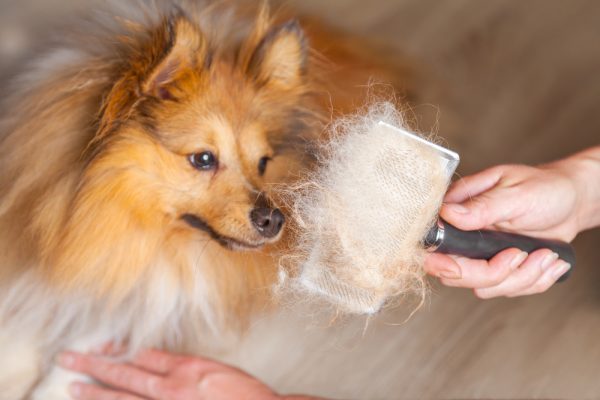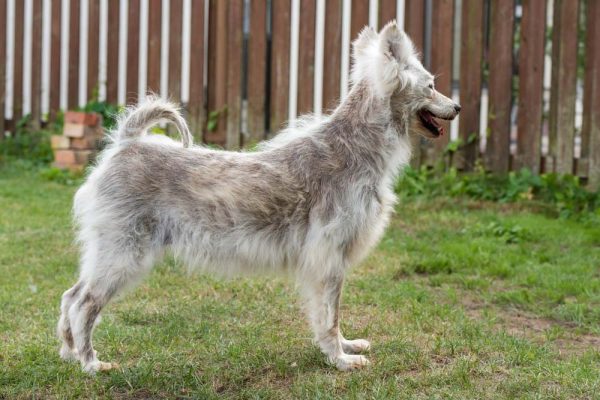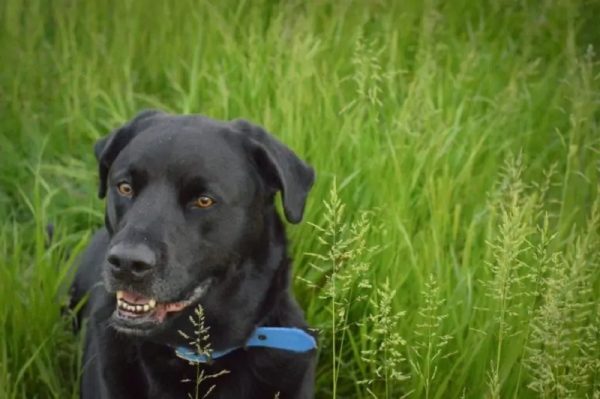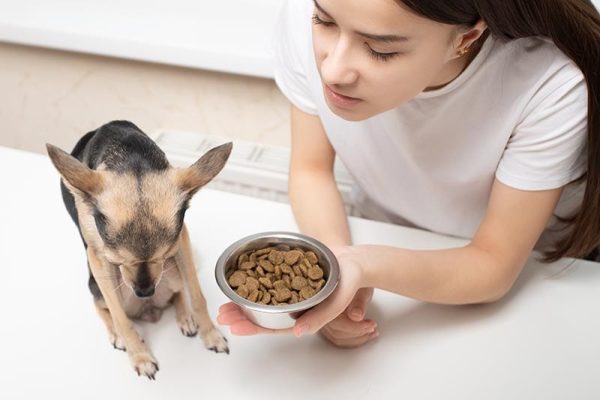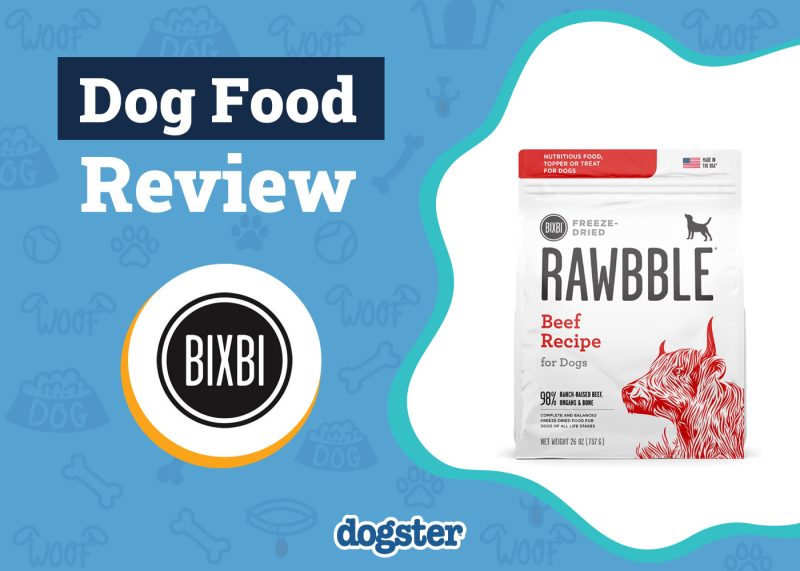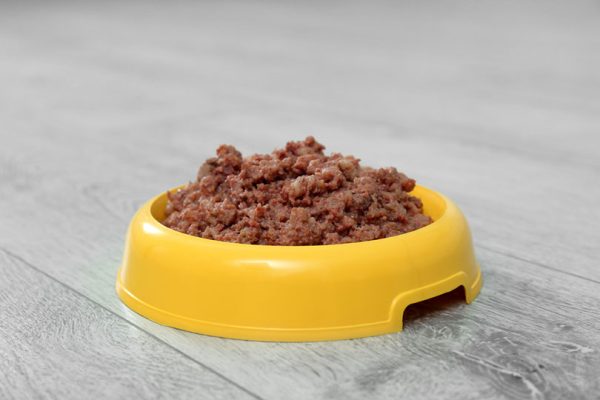In this article
View 3 More +A spunky, pint-sized pup is an excellent addition to your household, and you may be interested in the Pomeranian or Yorkshire Terrier. While these breeds are similar in some ways, including personalities larger than their statures, they also have differences.
It’s necessary to consider their size, exercise, temperament, health, and grooming needs when comparing the Pomeranian and Yorkie for a lap dog companion. Besides the difference in their appearance, their suitability with small children may influence your decision.
Choosing between a Pomeranian and a Yorkie may hinge on the hypoallergenic canine if you or a family member has allergies. Continue reading for more pointers to help you find the perfect small companion dog that suits your circumstances and lifestyle perfectly.

Visual Differences

At a Glance
- Average height (adult): 7–12 inches
- Average weight (adult): 3–8 pounds
- Lifespan: 12–16 years
- Exercise: 1 to 2 hours a day
- Grooming needs: High
- Family-friendly: Yes
- Other pet-friendly: Requires adequate socialization
- Trainability: Excellent but possesses a stubborn, independent streak
- Average height (adult): 8–10 inches
- Average weight (adult): 5–7 pounds
- Lifespan: 12–15 years
- Exercise: 2+ hours a day
- Grooming needs: Moderate
- Family-friendly: Yes
- Other pet-friendly: Mostly
- Trainability: Moderately intelligent but stubborn

Pomeranian Overview
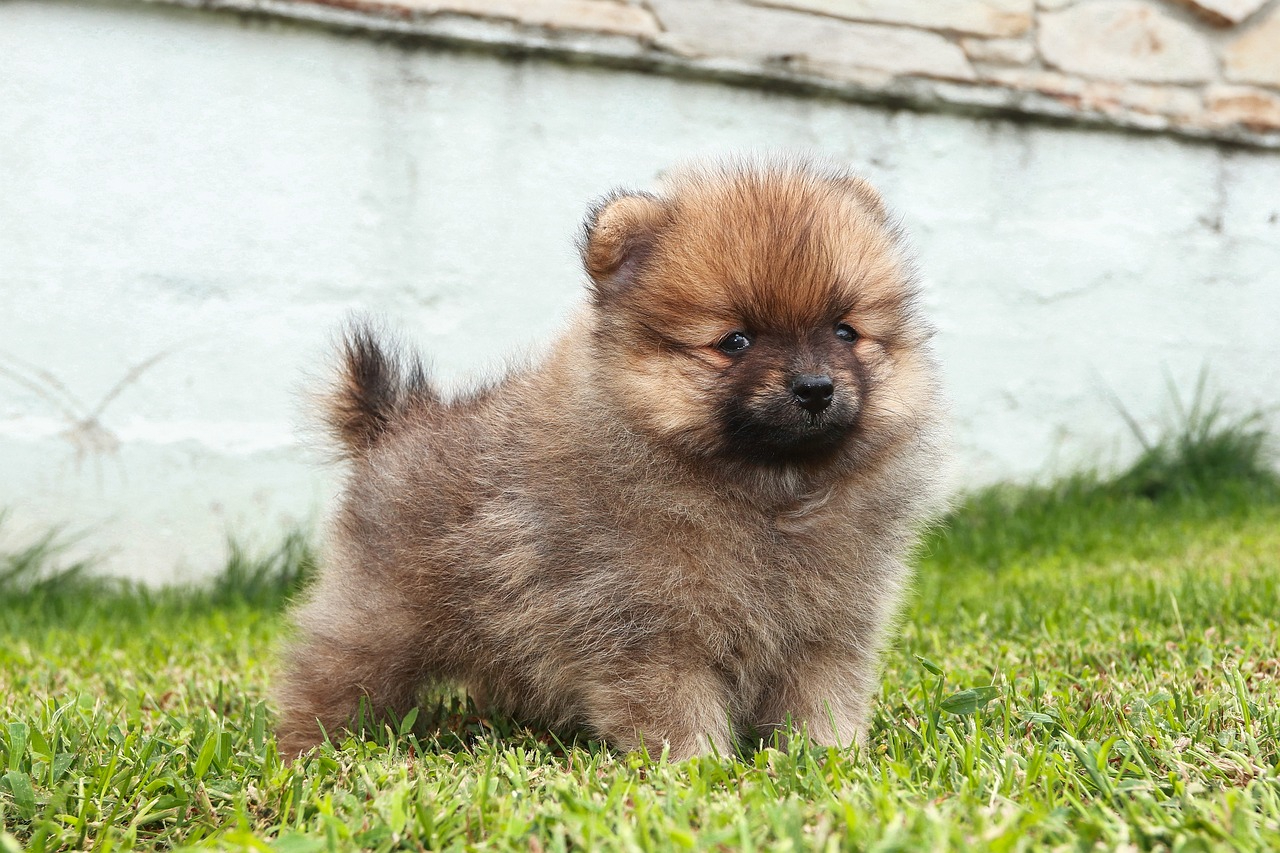
Despite their small stature, the Pomeranian was bred as a sleigh dog and has since become one of the most popular breeds worldwide. This toy breed was named after Pomerania, a region in Northeastern Germany/West Poland.
The Pomeranian or Pom is closely related to the German Spitz, American Eskimo Dog, Norwegian Elkhound, and Schipperke. Famous owners include Michelangelo, Sir Isaac Newton, and Mozart, the famed classical music composer. Queen Victoria popularized the Pomeranian in 1888.
They have thick, fluffy fur of various shades, either singularly light or dark, and resemble tiny teddy bears.
Personality/Character
Pomeranians are self-confident, highly intelligent, loyal, and affectionate dogs that make great additions to any household. They enjoy exploring new spaces and are alert and significantly curious about their surroundings, which makes them excellent guards and watchdogs.
Poms enjoy being the center of attention or leaders of the pack and are known for their larger-than-life personalities. They aren’t overly dependent or clingy. Poms are great with children and don’t suffer from separation anxiety, but their fiery dispositions create problems around other pets when not properly socialized.
In the minds of Pomeranians, they’re giant dogs, and this trait, along with self-confidence and independence, can prove troublesome when they come across new faces or other dogs. They are highly devoted to their owners and require early socialization, which gives them a generally friendly demeanor and playfulness.
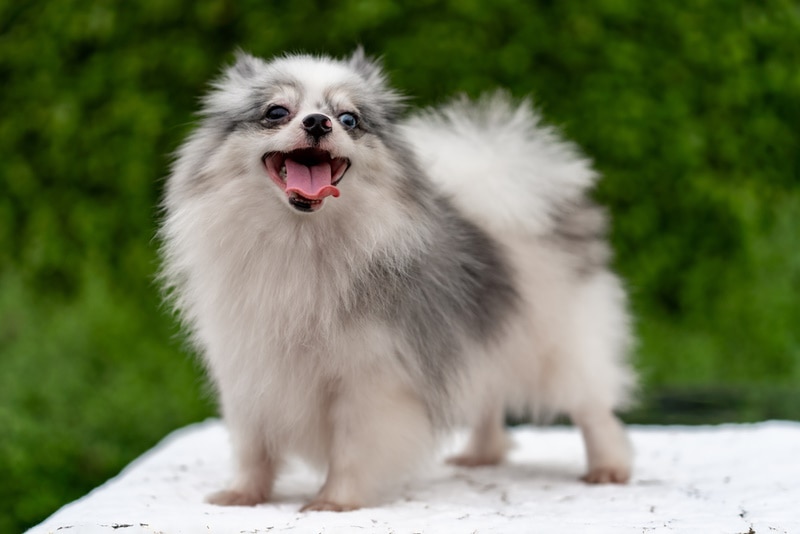
Training
Pomeranians are intelligent dogs and easy to train, but their stubbornness and independence sometimes get in the way of obedience training. They learn tricks fast, pick up on commands quickly, and make excellent therapy animals.
The Pom has become popular with tracking circles and agility; although they aren’t overly energetic, they’ll learn with ease. They may require more time to housetrain than other dogs, but they typically respond well to obedience training.
Health & Care
There aren’t many genetic issues associated with Pomeranians to worry about. They’re generally healthy, but they can suffer minor problems like inflamed eyes, allergies, and bouts of epilepsy, which aren’t challenging to manage or treat.
Collapsing trachea is another common issue in smaller breeds, and some Pomeranians also suffer from patella luxation. The Pomeranian’s double-thick coat requires regular brushing to prevent knotting and matting and monthly trips to the groomer for trimming.
Regarding feeding, the Pomeranian needs at least ½ a cup of kibble divided into two meals depending on the dog’s size and energy level.
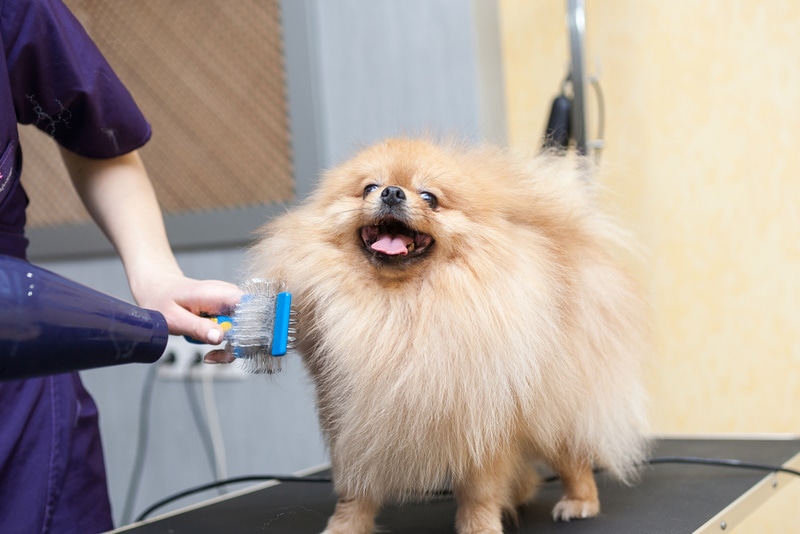
Breeding
Official breed standards for Pomeranians include a fluffy double coat in orange, red, and light brown. The Pom is ranked as the 22nd most popular dog in America by the AKC, which first entered them into their studbook in 1888.
Suitable For:
The Pomeranian is a favorite of small dog owners. They’re ideal for owners with limited living space and active lifestyles. They’re suitable for single owners and the elderly since they adapt well to being left alone.
Poms love the sound of their voices, and their barking can become problematic if you live in an apartment. However, you can reduce their barking with training. Despite their love of romping around the house or yard, they don’t cause much damage, mainly due to their small size.
- Independent toy breed that rarely suffers separation anxiety
- Cheaper than a Yorkie
- Ideal companion dog for adults and seniors
- Needs daily brushing and grooming to prevent tangles and mats
- Known for excessive barking and challenges with housetraining
- Susceptible to small dog health problems like trachea collapse and seizures
- Can be nippy and not ideal for households with small children

Yorkie Overview
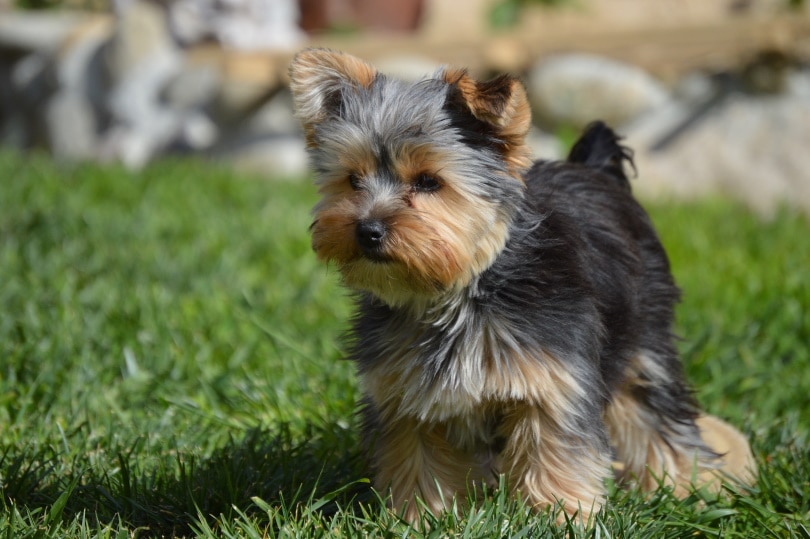
The Yorkshire Terrier, or Yorkie, was developed in England’s Lancashire and Yorkshire counties mainly for rat hunting and extermination. Due to their friendly temperament and small size, they are popular pets for city dwellers.
Beneath the friendly demeanor, the Yorkie is a ferocious and fiery rattler who is loyal and brave. The pampered pup is recognizable by their silky coat, which can be black and tan, black and gold, blue and tan, or blue and gold.
One of the Yorkie’s most endearing characteristics is that they are “hypoallergenic” and may be more suitable for allergy sufferers.
Personality/Character
The Yorkie is confident, intelligent, lively, and fond of people. They can suffer from separation anxiety if left alone for long periods, and they are happiest when they’re close to their owners.
Yorkies are courageous and fiery, with a bigger bark than bite, which leads to challenges if not socialized early, especially with larger dogs. However, Yorkies get along with kids, even though they don’t appreciate rough play.
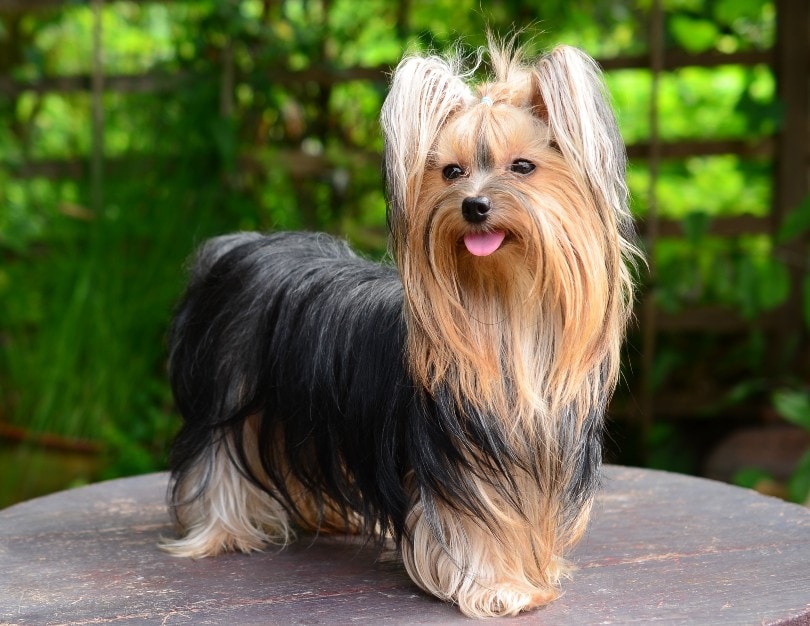
Training
The eagerness to please and intellect of Yorkies make them generally easy to train, but house training can prove challenging. Your Yorkie will thrive off positive reinforcement and reward-based commands if you start early due to the breed’s strong-willed spirit. Early socialization is also recommended—the younger they are, the more receptive they will be toward learning.
During their first few weeks, a Yorkie pup can go to the potty every hour, and during this period, you need to take them outside more often and provide rewards. They typically need to go outside 10 to 20 minutes after meals.
Health and Care
Although relatively healthy, Yorkies are susceptible to health issues common to small dog breeds. Along with collapsed trachea, other challenges include progressive retinal atrophy and patellar luxation.
Yorkshire Terriers’ luxurious and long coats require daily brushing and grooming to prevent matting and knotting. Their long ears, which are significantly droopy, also have to be kept dry at all times to avoid getting infected.
Yorkies and other small dogs are prone to dental diseases, and you must take special care to maintain their oral hygiene. Brush your pet’s teeth several times weekly to remove plaque and tartar buildup.
Around ½ to 1 cup of high-quality dry kibble is sufficient for their nutritional requirements. It’s vital not to overfeed your pup, as they’re prone to obesity, which is one of their most common health challenges.
To maintain a healthy weight, the medium-energy Yorkie requires at least 30 minutes of daily exercise and mental stimulation in between with toys and yard play.

Breeding
Several breeds, some of which are extinct, were used to develop the Yorkshire Terrier. They were initially owned by weavers as working dogs. They could fit into tiny crevices because of their small size and catch vermin such as rats, but their long silky coats were the ultimate loom products.
The English Kennel Club officially recognized the Yorkie breed in 1886, making them fashionable as lap dogs and subsequently decreasing their size.
Suitable For:
Yorkies are the AKC’s 13th most popular dog breed, and they’re great for apartment living as long as they are given sufficient exercise. They’re ideal for families, but a close eye is needed, especially around children, as they’ll occasionally nip if they aren’t properly trained and socialized.
They also make ideal pets for seniors but can suffer separation anxiety if left alone for a long time.
- Loyal and friendly temperament, especially towards their owner
- Intelligent and easy to train
- Hypoallergenic breed due to minimal shedding
- Barks less compared to Pomeranians
- Requires daily brushing and grooming to prevent fur tangles and mats
- Expensive to buy
- Doesn’t do well in families with smaller children
- Susceptible to small dog health challenges, like hypoglycemia, heat stroke, and seizures

Pomeranian vs Yorkie: Which Breed Is Right for You?

When comparing Pomeranians and Yorkies, it’s necessary to note their happy-go-lucky and friendly temperaments. They are best for active pet parents with time on their hands to spend much of their day with these pups.
Despite not being aggressive by nature, Poms and Yorkies do better in households where young children aren’t present. They adapt quickly to living in small spaces such as apartments and can be trained to be therapy dogs.
Both are perfect playmates and, with proper socialization, will get along with strangers and other dogs. However, the Pom is more suitable for those who spend more time away from home since the Yorkie can suffer from separation anxiety.
Related Reads:
- Chow Chow vs. Pomeranian: The Differences (With Pictures)
- Toy Poodle vs Yorkie: The Differences (With Pictures)
Featured Image Credit: Top – Pomeranian (ignartonosbg, Pixabay) | Bottom – Yorkie or Yorkshire Terrier (Mirko Fabian, Unsplash)



